
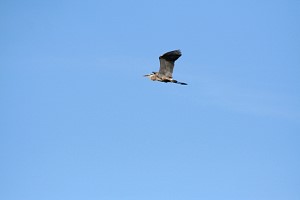 The Great Blue Heron (Ardea herodias) is the largest and most widespread heron.
Birds east of the Rockies in the northern part of their range are migratory and winter in the southern
U.S., Central America, or northern South America. It frequents marshes, sloughs, ponds, streams, rivers,
and lakes. Its diet can includes insects, snakes, turtles, rodents and small birds.
Return to Birds
The Great Blue Heron (Ardea herodias) is the largest and most widespread heron.
Birds east of the Rockies in the northern part of their range are migratory and winter in the southern
U.S., Central America, or northern South America. It frequents marshes, sloughs, ponds, streams, rivers,
and lakes. Its diet can includes insects, snakes, turtles, rodents and small birds.
Return to Birds
|
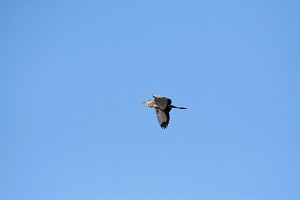 The Great Blue Heron feeds in shallow water or at the water's edge especially
around dawn and dusk. Herons locate their food by sight and generally swallow it whole.
It uses its long legs to wade through shallow water, and spears prey with its long sharp bill.
The average life span for a great blue heron is around 15 years. As with most animals, they are
most vulnerable when they are young. More than half (69%) of the great blue herons born in one
year will die before they are a year old.
The Great Blue Heron feeds in shallow water or at the water's edge especially
around dawn and dusk. Herons locate their food by sight and generally swallow it whole.
It uses its long legs to wade through shallow water, and spears prey with its long sharp bill.
The average life span for a great blue heron is around 15 years. As with most animals, they are
most vulnerable when they are young. More than half (69%) of the great blue herons born in one
year will die before they are a year old.
|
|
|
|
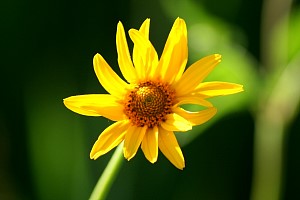
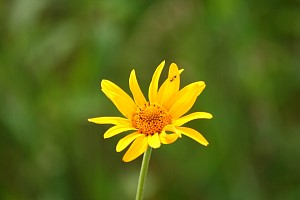
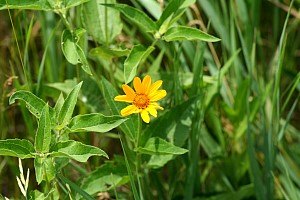
|
|
Native perennial Oxeye Sunflower or False Sunflower (Heliopsis helianthoides variety scabra)
Helopsis means ‘like the sun’, and the species name helianthoides means ‘like a sunflower’.
The flower has two rings of petals.
Oxeye sunflower in native to North America, from New Mexico east into South Carolina and north
into southern Canada. Oxeye sunflower was originally a species of tall grass prairies and savannas.
It is now most commonly encountered in prairie remnants, woodland edges, open or rocky woods,
and along old roads and railroads.
Return to Flora
|
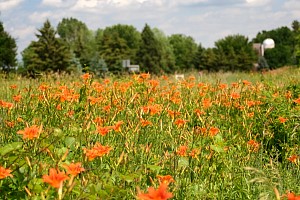
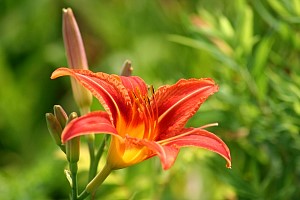
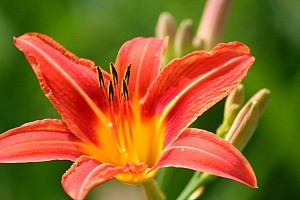
|
|
Courtesy of the Bailey Road ditch we have Orange Daylily (Hemerocallis fulva )
also known as the Tawny Daylily. Hemerocallis, means ‘beautiful for a day’, and the species name
- fulva - describes the tawny orange color of the flower. Orange daylily is native to Asia and was
introduced into the United States in the late 19th century as an ornamental.
Following its introduction, tawny daylily was widely
cultivated in North American gardens, and escaped plants may now be found scattered throughout
temperate regions of the continent Return to Flora
This species is not a true lily, as indicated by its unspotted blossoms and leafless stems. Tawny
daylily reproduces primarily by rhizomes (horizontal underground stems) and tuber-like roots, and
rarely by seeds.
Each flower opens for only one day, and is composed of 3 petals with wavy margins and 3 petal-like sepals.
The petals and sepals are fused below the middle to form a tube, but spread widely at the top to form a
blossom 3½ inches wide. The blossoms do not have a fragrance.
All parts of the daylily are edible, and plants have been cultivated for thousands of years in Asia for
food. The buds or new flowers are regularly cooked and eaten in China and Japan. In addition, the
rhizomes can be chopped and cooked like potatoes, and are said to be as sweet as sweet corn. The
tuberous roots have a nutlike flavor, and can be eaten raw or roasted. Young shoots have been
prepared like asparagus, but consumption should be avoided because
some reports warn that consumption of large quantities
of young shoots can be hallucinogenic.
|
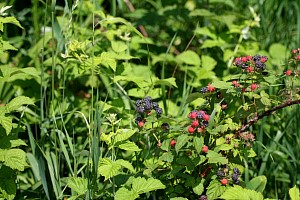
Across from Two Oaks are blackberries ripe enough to eat. The red ones are not ripe. As this habitat is
about to be destroyed (see directly below) they never did.
Return to Consumables
|
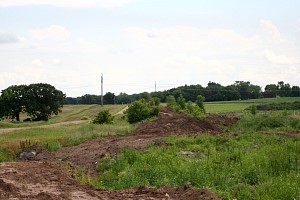
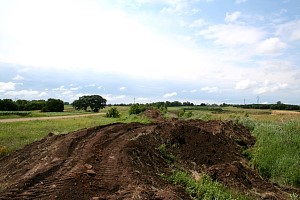
The gravel company had created a dirt ridge or berm along the west side of the road from just
in from of Two Oaks running to field #1. Now they are about to terraform this area again. From
the size of the trees that have grown up I would say this area had been in its current form
for perhaps ten years. Now its all going to get bulldozed.
|
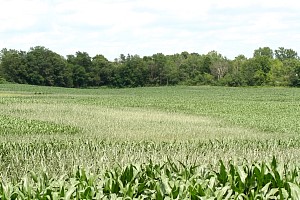
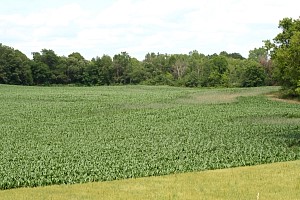
Here are a couple of shots of the corn in field #9. You can see the recent hot dry weather is starting
to stress the corn. Stressed corn plants appear lighter in color.
|
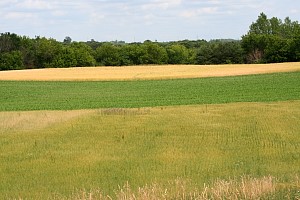
This is field #8 on the east side of the road just south of Two Oaks. The brown crop farthest in
the background is winter wheat that is ready for harvest. Winter wheat gets planted in the fall,
germinates and grows in the spring, and is ready for harvest in early summer. In the middle distance
is a swath of corn, in the foreground is barley.
|

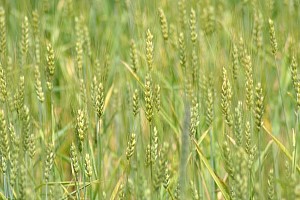
Barley and corn growing near the Copse. The rightmost picture shows 16 row barley heads.
Return to Consumables
|
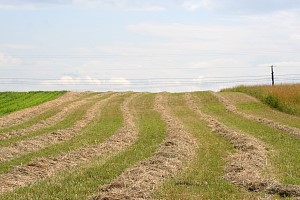
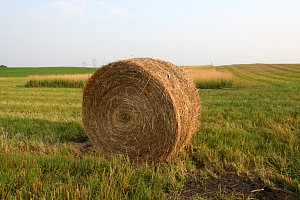
These shots show the hayfield after it's been cut. It dries in the sun for several days and then
gets bailed into these huge cylindrical bales. Farmers usually get two cuttings from a hayfield
in a season, later on we'll see the hay bailer in action during the second hay crop.
|
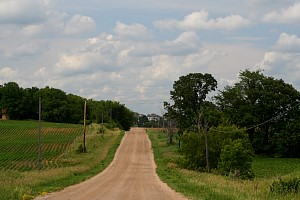
Heading north toward the two farms.
|
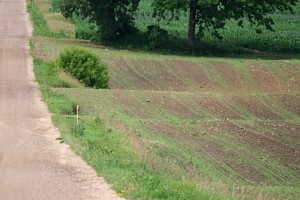
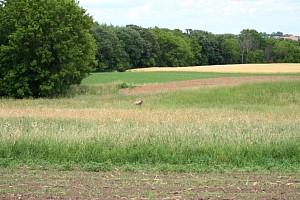
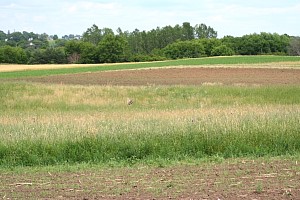 Just in front of Two Oaks. Enlarge these three pictures to see (leftmost) a rooster pheasant in the center of the picture and
(right two picture) the rooster as he flushes.
Return to Birds
Just in front of Two Oaks. Enlarge these three pictures to see (leftmost) a rooster pheasant in the center of the picture and
(right two picture) the rooster as he flushes.
Return to Birds
|
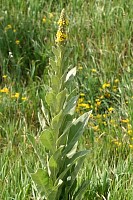
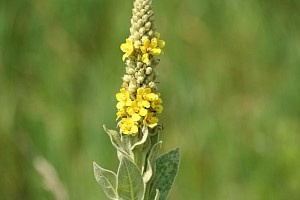
Common mullein (Verbascum thapsus) -also known as wooly mullein - is an erect herb
brought over from Europe by settlers. It was used as a remedy for coughs
and diarrhea and as a respiratory stimulant for the lungs when smoked.
It is estimated that a single plant can produce 100,000- 180,000 seeds which may
remain viable for more than 100 years. Common mullein threatens natural meadows and forest openings.
An established population of common mullein can be extremely difficult to eradicate.
Return to Flora
|
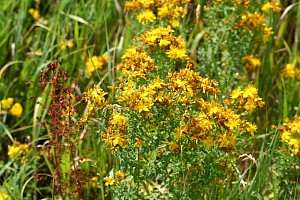
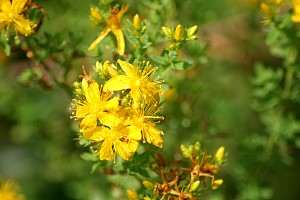
Common St. Johnswort (Hypericum perforatum ) is a native of Europe that colonists
brought with them when they immigrated to North America.
The common name 'St. Johnswort' may be in reference to the time of flowering, which generally
occurs around St. John the Baptist's Day (June 24).
Return to Flora
|
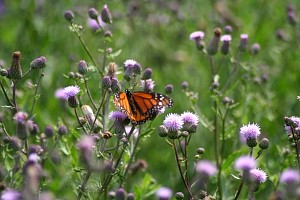
A monarch butterfly on Canadian thistle. Of the 140 types of butterflies in Minnesota, the
monarch is one of the most recognizable. The monarch is the only butterfly in North
America that migrates. Each fall Minnesota's monarchs migrate along the same
route year after year to Mexico. In the spring, monarchs travel to southern states,
lay eggs on milkweed plants, then die. The offspring develop into butterflies and
finish the journey to Minnesota. Monarch caterpillars consume nectar from milkweed
plants that give them a bitter taste that birds don't like. Birds soon learn to leave
the caterpillars alone.
|
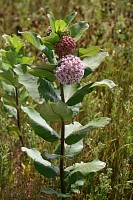
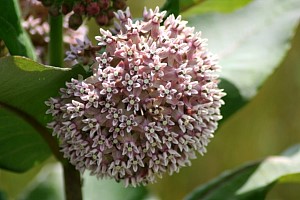
Showy Milkweed with huge flower heads.
Return to Flora
|
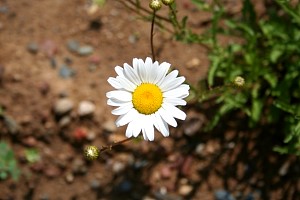
Oxeye Daisy (Chrysanthemum leucanthemum) is a European native.
The Oxeye daisy can survive over a wide range of environmental conditions. It is common in native
grasslands, overgrazed pastures, waste areas, meadows, railroad rights-of-way, and roadsides.
Return to Flora
|